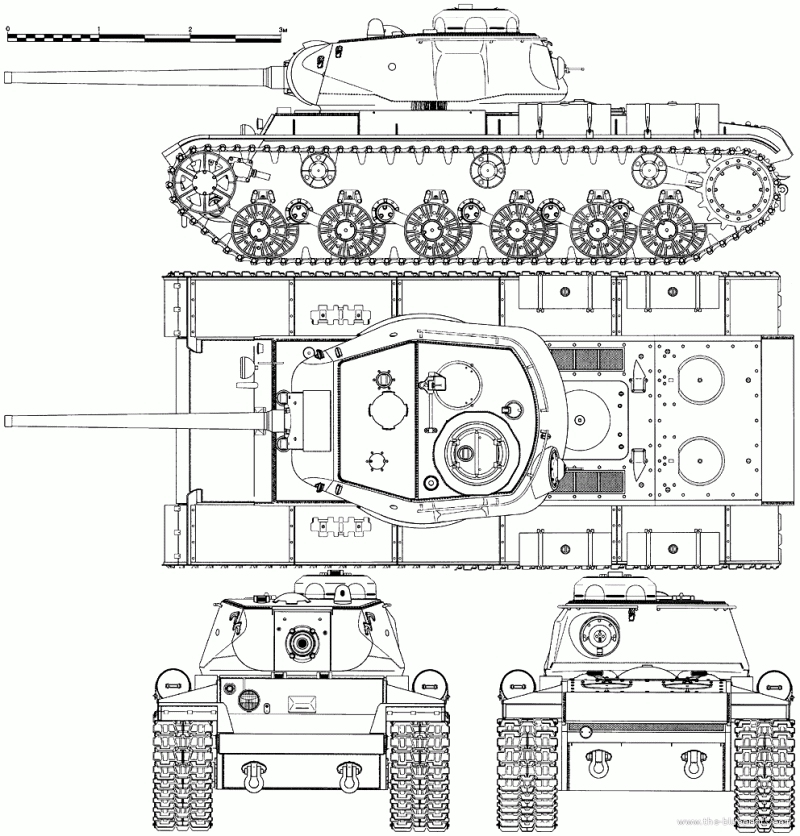KV-85 Tanks and Rabbit Holes
Hi All,
John Tiller’s games have become famous for their depth of research. We thought we would share one of our recent academic discussions.
We call them rabbit holes; a small amount of information that takes you down the research equivalent of Alice’s trip to Wonderland. They are like a piece of string where you see the end and pull it and end up with a mass of ‘facts’ that either confirm, cancel or confuse the researchers understanding.
There are so many considerations when building these games. Where were they fought, what was the terrain like, who was there, what were the participants armed with and even what was the weather like? All these facts must be found, reviewed, and implemented and more often than not something will conflict with the ‘reality’ the designer has just included in his scenario, order of battle or game parameter data.
Let me share our recent discussion as an example.
One of our researchers recently shared a number of images in relationship to a discussion on ground conditions. The discussion began around is this Snow, Soft or even Normal ground state? The weather records said the ground was frozen i.e. easy for units to move on, but there was clearly not enough snow on the ground to hinder movement and it was not cold enough to freeze streams or rivers (the basis to call Frozen as the ground condition).
That was not the impetus for discussion – we actually agreed quickly this was Normal ground state due to the lack of ground snow, but rather it was the presence of this image:
A Soviet tank, so what.
This tank is a rare beast - the KV-85. From Wikipedia it is described as follows:
A stopgap upgrade to the KV series was the short-lived KV-85 or Objekt 239. This was a KV-1S with the new turret from the Object 237 (IS-85) still in development, mounting the same 85 mm D-5T gun as the SU-85 and early versions of the T-34-85 (not yet in production at the time). The 85 mm proved capable of penetrating the Tiger I from 1000 m and the demand for it slowed production of the KV-85 tremendously (only 148 were built in the end). The KV-85 appeared on the front beginning in September 1943 and its production ended by December 1943. Soviet industry was therefore able to produce a heavy tank as well armed as the Tiger I before the end of 1943. Although the KV-85 was an excellent opponent to the Tigers and Panthers, it was a stopgap and thus was built in small numbers.
Only 148 of these vehicles were built in total over a four-month period from September to December 1943. From a Soviet perspective that is a particularly small number over a short period, but the Battle of Kursk puts it all into perspective. With both Tigers and particularly Panthers being introduced in numbers, it was clear the existing T-34/76 vehicles were outclassed. The planned IS/JS class of vehicles were still in pre-production and the need for a more capable tank was desperate – hence the mating of the IS-85 turret with the KV-1S hull.
The reason this KV-85 was of interest was that the image was captioned in Robert Forczyk’s book “Tank Warfare on the Eastern Front 1943-45” as follows.
We were working on an order of battle that covered this actual engagement and there were no KV-85 tanks assumed in any unit.
Welcome to the piece of string. Pull it if you dare!
We started to answer some of the questions reading Forczyk’s book where on page 172 he mentions:
An even worse development than Rybalko’s threat to the German assembly areas south of Fastov was that Vatutin achieved a major operational breakthrough west of Kiev and he sent General-leytenant Viktor K. Baranov’s 1st Guards Cavalry Corps (1 GCC) as a mobile group east toward the main German supply base at Zhitomir, followed by Generalleytenant Kirill S. Moskalenko’s 38th Army. Moskalenko’s army included the 7th Guards Heavy Tank Regiment equipped with 21 of the new KV-85 heavy tanks, which were intended as a stop-gap until the new IS-2 and T-34/85 tanks arrived in early 1944.
In support, Prit Buttar's “Retribution, The Soviet Reconquest of Central Ukraine 1943”, on page 369 states.
In response, he was permitted to return V Guards Tank Corps to the southern axis; it was replaced in the drive towards Zhitomir by XXIII Rifle Corps and 7th Guards Tank Regiment. This latter formation was equipped with the KV-85 tank
Neither Forczyk nor Buttar cites sources for this information, but at least both agree that 7th Guards Heavy Tank Regiment was part of this particular operation. This placed the 7th Guards in action at least by November 12th.
Further Charles Sharp in his “Red Storm Soviet Mechanised Corps and Guards Armored Units 1942 to 1945”, on page 78 states;
In October 1943 it was re-equipped with KV-85 tanks. In August 1944, the regiment received IS-II tanks.
So, based on all this info, we can assume that there were KV-85’s with 7th Guards Heavy Tank Regiment, yet we seem to have missed this unit in our initial pass of the order of battle.
The БОЕВОЙ СОСТАВ СОВЕТСКОЙ АРМИИ or BOYEVOY SOSTAV SOVETSKOY ARMII (BSSA) is usually a starting point. This series of tables lists every Soviet unit by army, sometimes as low as battalion level, as at the first of the month. When reviewing the BSSA November ’43 report there is no 7th Guards Heavy Tank Regiment in 38th Army, or in its commanding unit 1st Ukraine Front, both indicated by the red ellipses. Note, all images can be clicked for full size.
This was the basis for our order of battle and it now appears reasonable that the 7th Guards are not present. Things get a bit more interesting when checking the BSSA December ’43 report because here are the elusive 7th Guards Heavy Tank Regiment directly under the 1st Ukraine Fronts command.
Clearly this unit must have arrived sometime in November, between the two reports at the start of each month.
Another clue is found on the Russian site Tankfront.ru which has exhaustive data on many formations. It listed the following for the 7th Guards Heavy Tank Regiment:
7th Guards Breakthrough Tank Regiment, which arrived in Tula Tank Camp from the front on October 9, 1943, on November 14 received 21 KV-85s, which had arrived from ChKZ, for staffing. Eight days later, the unit was sent to the front, and on November 19, 1943, it was unloaded in Darnitsa, entering the disposal of the 60th Army of the 1st Ukrainian Front.
Darnitsa is on the south-west outskirts of Kiev.
Tankfront also shows the subordination of the regiment. You can see in the next image that it started in the Moscow Defense Zone (MVO), moved under 1st Ukraine Front on Dec 1st and was part of 38th Army on Jan 1st and Feb 1st, 1944. There is also a summary of when the unit was on active service and this shows from Nov 19th, 1943. The 38th Army was on the defensive by this time and not attacking. The summary also highlights the unit was allocated to 60th Army, not 38th. It is starting to look like Forczyk has the wrong dates for when this unit was available and attached to Moskalenko’s 38th Army.
This moves us onto the second report available to us. This report gives the component units of each army every ten days. This allows us to narrow down formations that have come into play during a month. If the 7th Guards were attached in November, it would show in this report
Looking at the report dated November 20th, we can see that the 7th Guards Heavy Tank Regiment has not joined 38th Army. As indicated by the red circle, 38th Army only has 5th & 8th Guards Tank Corps as well as 39th Tank Regiment.
Checking 60th Armies report for November 20th also shows that 7th Guards Heavy Tank Regiment is not present. This is not surprising. If the 7th Guards had only arrived in Kiev on the 19th, they would have not had time to join either Army. The fighting had died down by November 24th, so there is every chance the 7th Guards never even went into action.
Looking at the same reports for December shows that the 7th Guards Heavy Tank Regiment is not part of 38th Army on December 1st, but it has joined by Dec 10th, as indicated by the blue arrow. The Tank regiment remains within 38th Army for the remainder of the month and this aligns to the Tankfront report.
Armed with all this information and healthy amount of cross checking, it is clear this unit needs to be included in game. Neither Forczyk or Buttar were correct on when the regiment was available, but they provided enough information for us to look in the right places. We had missed including the 7th Guards as it was not present on November 1st and this just reinforced the need to always compare subsequent months to identify any reinforcing units. That had been done, but this particular tank regiment had been missed. By a stroke of luck, it has been found and included in game.
A second statement by Forczyk on page 173 mentioned.
He declared that Vatutin had lost 700 tanks in these battles and that Rybalko’s 3 GTA and the 38th and 60th Armies had been badly defeated. Again, these were ridiculous exaggerations, intended to assuage Hitler’s anger about the loss of Kiev. In order to buttress his claims, two KV-85 tanks captured during the December counterattacks were sent back to Germany as trophies, although these provided an ominous indication that the Red Army would field new tanks in 1944.
As shown above it is believed that tank number 32 was captured at Radomshyl’ and subsequently sent to Germany for evaluation. Even that is open to conjecture!
There are photos of a captured KV-85 taken to Heereswaffenamt Prüfstelle 6 (Test Centre 6), called ‘White 31’
So that is not our tank 32. Digging further into the Bundesarchiv we found the photo with its Bundesarchiv identifier. This also had the date it was taken (December 1943) and the photographers’ name: Maier K.F.
And interestingly there was two more shots in the series by the same photographer.
Getting the larger versions of the photos and putting them in order:
One of our researchers who found this photo series said:
One thing I did nail down is that it is very unlikely the photo of the knocked out KV-85 is from the Kiev area. I traced down other photos by the same photographer (there are only a few) and he took a couple more of that KV-85. You can see by the Edelweiss patches on these other photos these are definitely mountain troops (3rd & 4th Mountain, 101 Jaeger were in the Dnieper Bend at this time) The smiling NCO in the middle of the group photo looks to be the hero of the moment for having stopped the KV. Wondering if the tube in his hand is an empty, early model Panzerfaust launcher. Apparently, the dead Russian right behind them is of no concern (there are two more on the other side of the tank). Firm ground, no snow, and dead corn stalks would indicate October or November. Gloves and hands in pockets indicate it's cold.
I think he was right on all the above other than the date. In the Bundesarchiv they are all identified as December 1943, showing how late significant snow was in the Ukraine that year.
Who would have thought a simple discussion about the weather would have taken us down this particular rabbit hole? This is just one of many when producing one of these titles!
Till next time!



























Very much enjoyed the description of the process. The displayed degree of thoroughness is tempting me to venture out of the realm of black powder to WW2.
Leave a comment